Imagine taking a stroll in a perfectly landscaped garden or relaxing in your backyard oasis after sunset, surrounded by a captivating ambiance that accentuates the beauty of nature. This enchanting experience is made possible through landscape artificial lighting, a creative and practical solution that brings the outdoor spaces to life even when the sun goes down.

In the realm of outdoor design, landscape artificial lighting serves as a magical element that enhances the beauty and functionality of your exteriors. By thoughtfully illuminating your outdoor spaces, you can create an inviting ambiance, improve safety, highlight architectural features, and extend the usability of your landscape into the evening hours. This post sheds light on the importance of outdoor artificial lighting and explores the myriad benefits offered.
The Importance of Landscape Artificial Lighting
Landscape artificial lighting serves multiple purposes beyond simply illuminating the darkness. Outdoor artificial lighting extends the usability of exterior spaces, allowing you to entertain guests, relax, or engage in various activities even after sunset. Moreover, it enhances safety and security by illuminating potential hazards and deterring unwanted intruders. Additionally, well-designed landscape lighting adds value to your property, creating an inviting and visually appealing atmosphere.
Types of Landscape Artificial Lighting
Choosing proper outdoor artificial lighting is critical for creating the optimal ambiance and functionality in your home or business. Landscape artificial lighting is both a practical necessity and a design element that change the mood and ambiance of any location. In this essay, we will look into landscape artificial lighting categories such as Landscape Ambient Lighting, Landscape Task Lighting, Landscape Accent Lighting, and Landscape Decorative Lighting. We will find out how these alternatives improve the visual appeal and overall aesthetic of the setting by looking into them.
Landscape Ambient Lighting
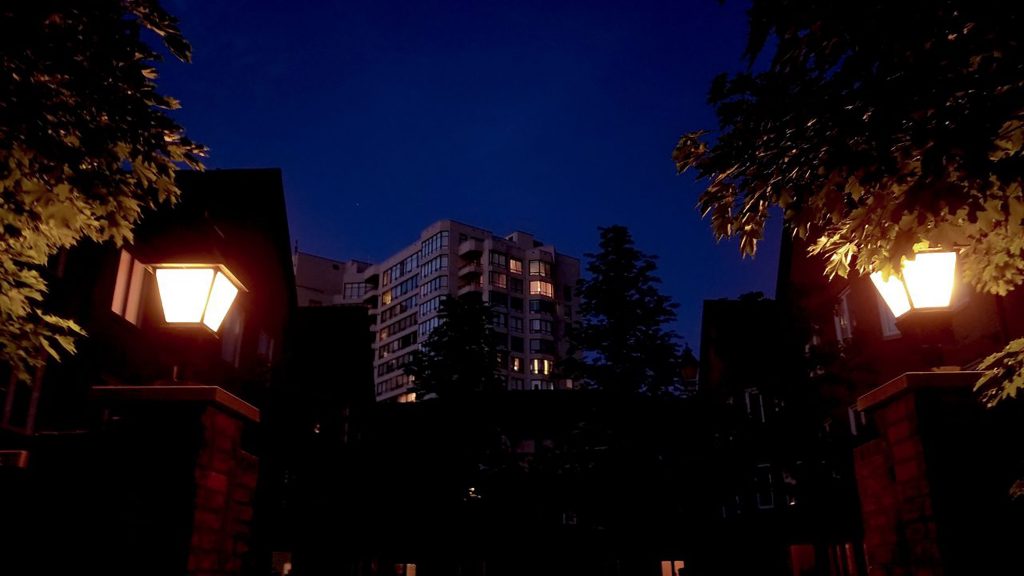
Landscape ambient lighting, also known as landscape general lighting, is the principal means of lighting a space, providing overall brightness and a comfortable amount of light for everyday activities. Outdoor general ambient lighting is the foundational illumination layer, providing sufficient visibility for daily activities. Landscape ambient lighting emulates natural daylight by uniformly diffusing light across the terrain to minimize shadows and provide a balanced brightness.
Landscape Task Lighting
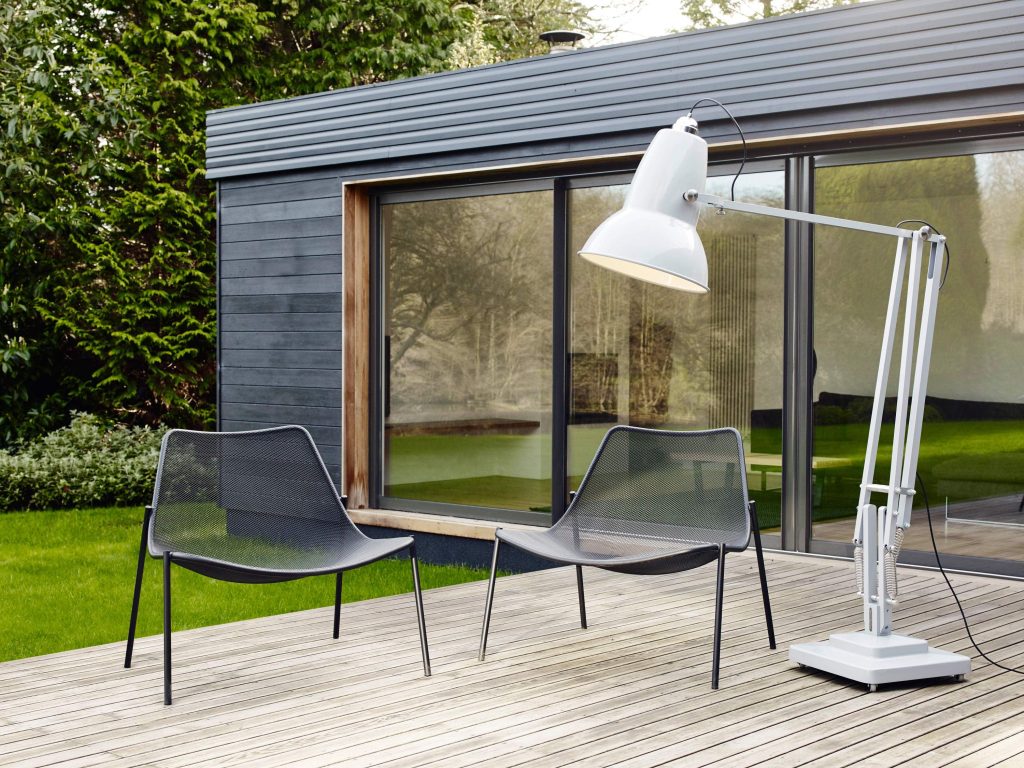
Landscape task lighting is a specialized kind of lighting that seeks to provide focused and concentrated lighting within defined areas dedicated to specific tasks or activities. Outdoor task lighting has the ability to provide bright and direct light, thereby decreasing shadows and glare. The landscape task lighting configuration allows people to accomplish jobs with greater clarity and precision, enhancing efficiency and productivity.
Landscape Accent Lighting
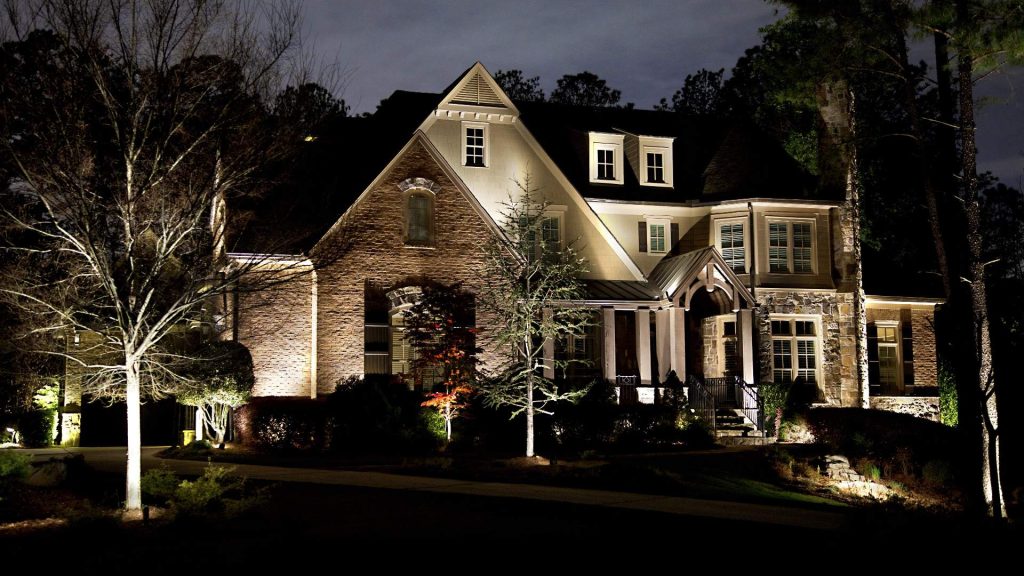
Landscape accent lighting is a lighting method used to draw attention to and highlight specific items, locations, or architectural characteristics in a given place. Outdoor accent lighting is commonly used to direct attention to artwork, sculptures, plants, or other significant features, creating a focal point that enhances the overall visual appeal. The landscape accent lighting technique adds drama and elegance to an outdoor setting by accentuating the beauty and significance of the selected components.
Landscape Decorative Lighting
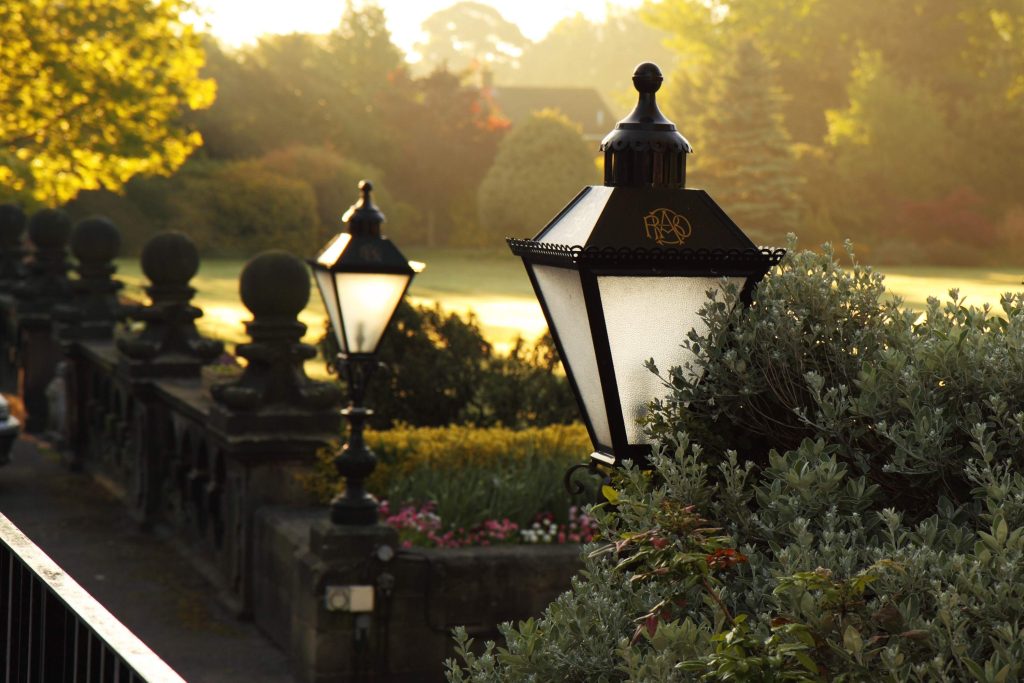
Landscape decorative lighting is the use of lighting fixtures and arrangements primarily intended to improve the visual beauty and aesthetics of a specific site. In contrast to general or task lighting, which prioritizes functional illumination, outdoor decorative lighting functions as a conduit for creating an atmosphere, evoking a mood, and adding artistic elements to the architecture of the place. Landscape decorative lighting‘s objective extends beyond plain functionality, as it strives to create an alluring mood and add to the overall artistic appeal of the outdoor setting.
Landscape Artificial Lighting Advantages and Disadvantages
Landscape artificial lighting has become increasingly popular for improving the aesthetic appeal and functionality of the settings. Exterior artificial lighting provides numerous advantages, from creating a pleasant ambiance to improving safety measures. However, outdoor artificial lighting has its downsides. In this presentation, we will go into the benefits and drawbacks of landscape artificial lighting. You will find significant insights into landscape design decisions and will gain a better grasp of this lighting system.
Landscape Artificial Lighting Advantages
Aesthetic Appeal: An inherent advantage of landscape artificial lighting is its capacity to accentuate the allure of outdoor spaces. Thoughtful selection and strategic placement of lighting fixtures can highlight distinctive architectural elements, sculptures, or vibrant foliage within your landscape. The interplay of light and shadows introduces a sense of depth and drama, fundamentally transforming an ordinary outdoor setting into a mesmerizing visual spectacle. The careful orchestration of artificial lighting adds a touch of glamour, illuminating the unique features of your landscape and creating an unforgettable ambiance.
Highlighted Features: You can draw attention to the beauty of architectural features or distinctive components in your environment by thoroughly lighting them. The proper lighting may emphasize your home’s exterior, water features, sculptures, or any other architectural element you want to highlight, providing your outdoor space depth and character.
Extended Usability: Outdoor artificial lighting allows you to enjoy your external spaces even after sunset. You can increase the usability of your patio, deck, or garden by strategically placing lights, providing an attractive setting for nighttime events or quiet leisure. Landscape artificial lighting allows you to enjoy your outdoor environment after daylight hours have passed.
Increased Safety: One of the main benefits of landscape artificial lighting is that it improves safety. By providing good vision and guiding visitors, illuminated paths, steps, and entrances help to reduce accidents. Outdoor lighting deters prospective burglars, making your property more safe.
Increased Property Value: When you choose to invest in landscape artificial lighting, you are investing not only in your enjoyment but also in the value of your home. Lighting systems that are thoughtfully designed and properly installed considerably improve the look of your house, making it more enticing to potential buyers. A beautifully lit environment leaves a lasting impression on visitors and potential real estate investors. Outdoor artificial lighting becomes a valuable asset by improving the visual attraction of your property, potentially increasing the desirability and market worth of your home.
Landscape Artificial Lighting Disadvantages
Initial Cost: The initial expense of landscape artificial lighting is a disadvantage. Quality lighting fixtures, professional installation, and periodic upkeep can all add up to a substantial cost. However, it is critical to consider the long-term benefits and energy savings that come with energy-efficient lighting systems.
Energy Consumption: The energy consumption related to landscape artificial lighting is one of its major drawbacks. Traditional lighting systems, such as incandescent or halogen bulbs, can be energy-intensive, resulting in higher utility bills. However, technological improvements led to the development of energy-efficient alternatives, such as LED lights, which use less electricity and have a longer lifespan.
Care and Maintenance: Landscape artificial lighting requires periodic upkeep and attention. Fixtures may need to be cleaned, bulbs replaced, and wiring tested to guarantee good operation. Lighting systems that receive inadequate care might become less effective and necessitate costly repairs or replacements.
Light Pollution: Improperly designed or poorly directed lighting can contribute to light pollution, which can be hazardous to the environment and human health. Excessive and inadequately shielded lighting can disrupt natural ecosystems, affect wildlife behavior, and cause discomfort to neighboring properties. When planning and installing landscape artificial lighting, it is critical to consider light pollution.
Methods of Landscape Artificial Lighting
Several lighting solutions are required to achieve the desired visual impact and create an attractive outdoor atmosphere. Here are some typical methods for landscape artificial lighting:
Landscape Downlighting
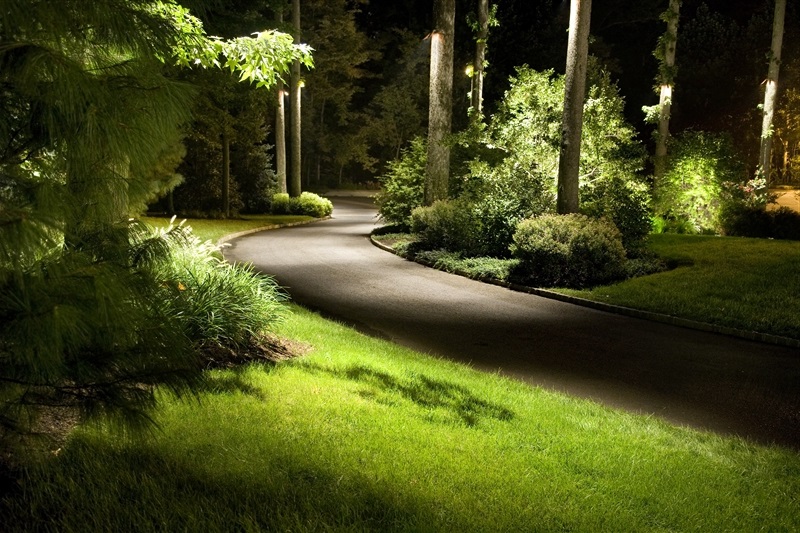
Landscape downlighting mimics the natural lighting provided by moonlight or sunlight. Fixtures are installed high above the ground, casting down a soft or strong light. This method generates a tranquil and romantic atmosphere, which is great for intimate events or relaxation places.
Landscape Uplighting
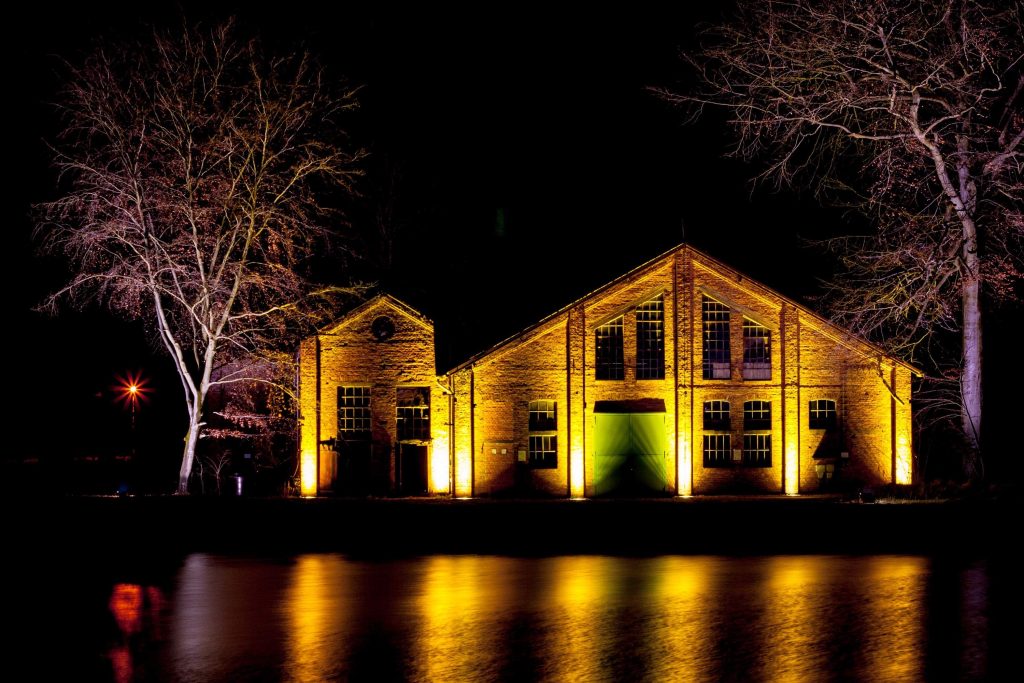
Landscape uplighting involves placing fixtures at ground level, directed upward to light objects from below. This method uses to highlight trees or other tall structures, creating a stunning visual effect that mimics the soft glow of moonlight filtering through the branches.
Landscape Frontlighting
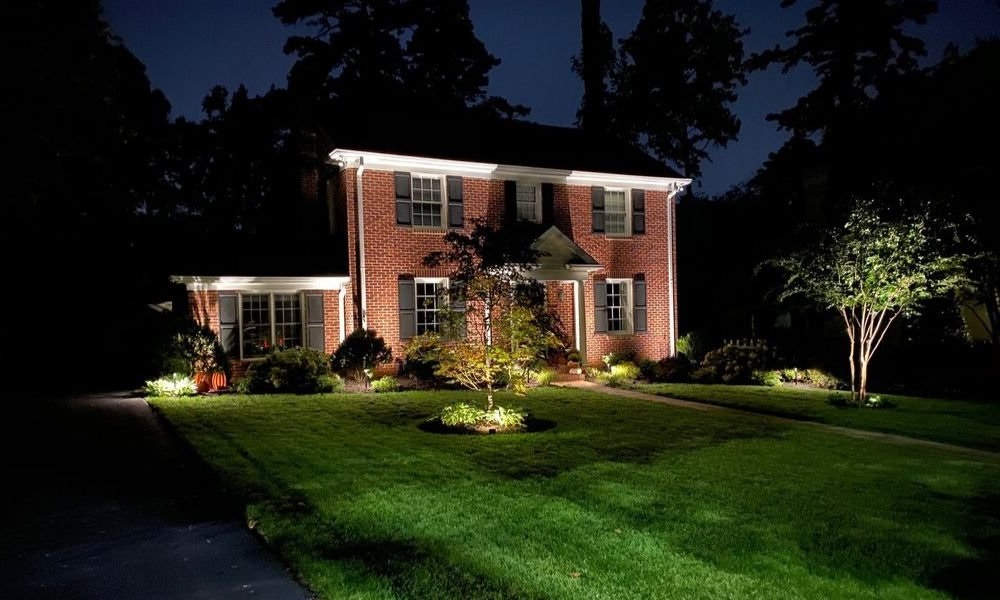
The deliberate installation of light fixtures in front of architectural structures or landscape features to light them from their front is known as landscape frontlighting. The details and textures of the artifacts are highlighted by outside front lighting, producing a spectacular visual impression. Front lighting can draw attention to your home’s front, sculptures, fountains, or any other focal points in your landscape.
Landscape Backlighting
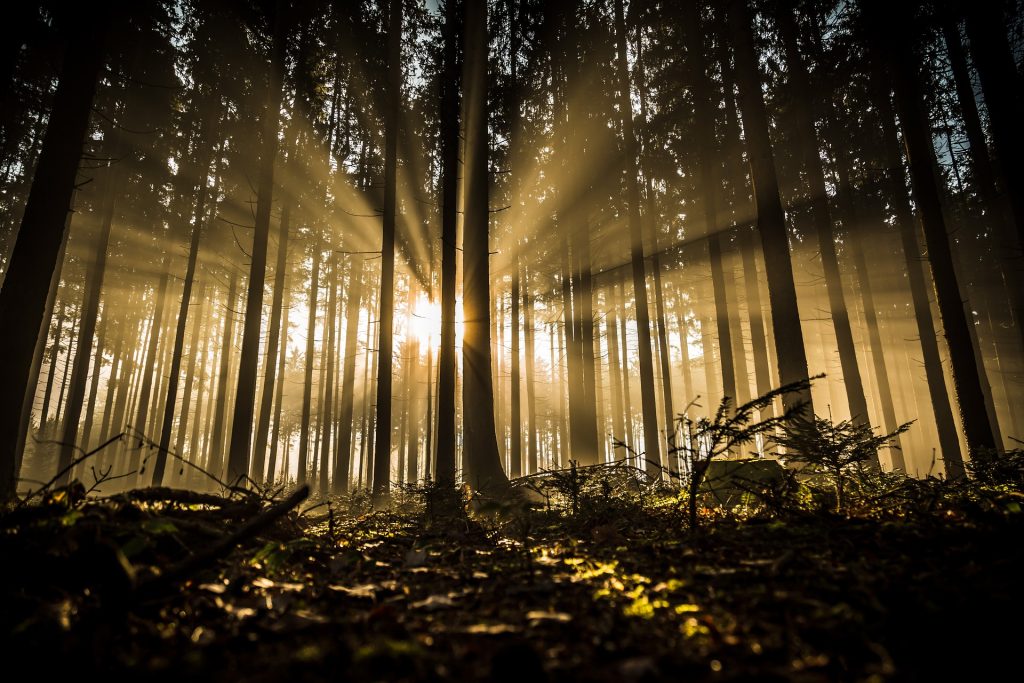
Landscape backlighting, or landscape silhouette lighting, is an artistic method where the light source is placed behind an object, casting its shadow on a surface such as a wall or a backdrop. This method is ideal for creating dramatic silhouettes of trees or other interesting shapes, adding depth and mystery to your landscape.
Landscape Cross Lighting

Landscape cross lighting is the practice of illuminating an object from several angles using multiple light sources. This method eliminates harsh shadows and properly distributes light, revealing the actual beauty and subtleties of the artwork.
Landscape Flood Lighting

Landscape flood lighting implies the use of powerful, wide-angle lights to cast a broad beam of light over an area of interest. This method is perfect for emphasizing vast outside spaces, architectural elements, trees, gardens, or any other focal points you want to highlight. Outdoor floodlights provide homogeneous, powerful illumination that makes a visually impressive impact.
Landscape Grazing Lighting
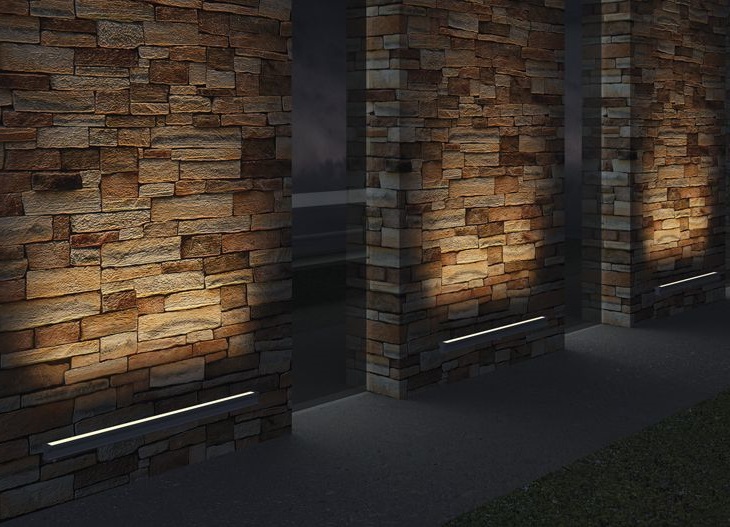
Landscape grazing lighting involves placing a light fixture near a textured surface, such as a stone wall or a tree trunk, at an angle. The light grazes the surface, highlighting its texture and creating a captivating play of light and shadow.
Landscape Hanging Lighting
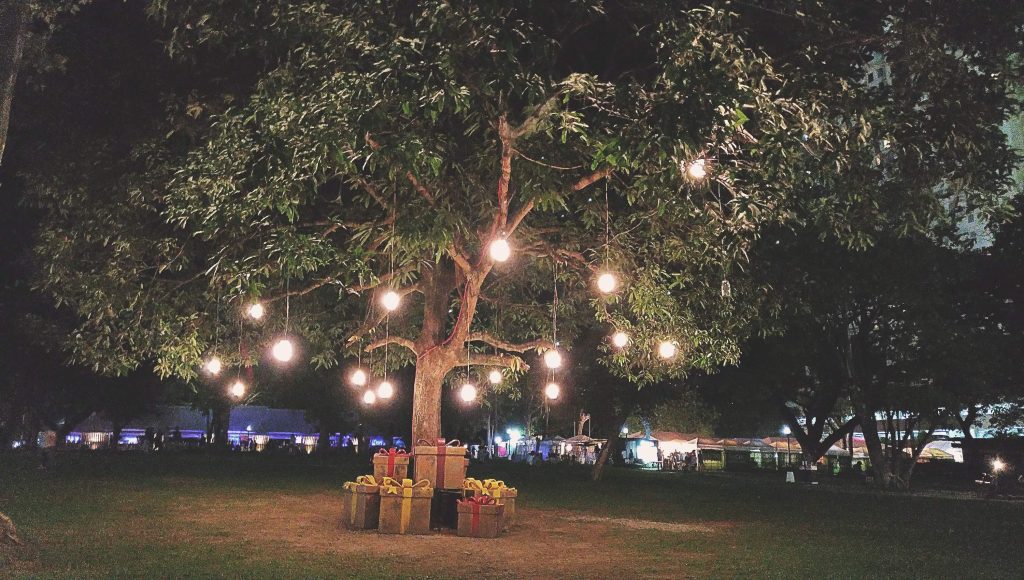
The use of suspended light fixtures to brighten outdoor areas is known as landscape hanging lighting. The fittings are suitable for hanging from pergolas, trees, or even freestanding poles. Outdoor hanging lighting’s elegance and sophistication stem from its ability to create a warm and intimate ambiance while adding a touch of grace and sophistication to any exterior setting.
Landscape Wall Wash Lighting

Landscape wall wash lighting is a practical option for lighting a large portion of a wall or other vertical surfaces. This lighting style is perfect for pointing out textured walls, garden fences, or outdoor murals. Wall washers, which produce a broad beam of light, are frequently used for this particular purpose. Outdoor wall-washing lighting generates a soft, ambient glow by uniformly distributing light across the surface, enhancing the visual attractiveness of outer space.
Landscape Artificial Lighting Best Practices
To create a magnificent outdoor environment, landscape artificial lighting is an art that demands considerable study and design. You can transform your exterior space into a compelling refuge by applying best practices that combine practicality and aesthetic appeal. In this post, we will look at the best landscape artificial lighting strategies to help you get spectacular outcomes that will improve your outdoor experience.
Define your Objectives, Considering the Overall Design
Before diving into the intricacies of landscape artificial lighting, it’s crucial to define your objectives. Determine the primary purposes of your lighting installation – are you looking to enhance safety, showcase specific features, or create a cozy atmosphere? Identifying your goals will help you make informed decisions throughout the planning and implementation stages.
It is important to match your lighting plan to your overall landscape design. Consider style, architecture, and existing elements in your outdoor space. A cohesive lighting design should complement and enhance the natural beauty of your surroundings, whether it’s a contemporary garden or a rustic backyard.
Choosing the Right Artificial Lighting Fixtures
When selecting artificial lighting fixtures for your landscape, it’s essential to consider factors such as energy efficiency, durability, and aesthetics. Here are some popular options to explore:
LED (Light Emitting Diode) lighting has gained immense popularity in landscape lighting due to its energy efficiency, longevity, and versatility. LED fixtures produce bright, focused light while consuming minimal energy, resulting in reduced electricity bills and lower environmental impact.
Solar lighting harnesses the power of the sun to illuminate your outdoor spaces. These fixtures consist of solar panels that charge during the day and automatically turn on at dusk. Solar lighting is an eco-friendly option that requires no wiring, making it easy to install and move around the landscape.
Low-voltage lighting systems operate on a lower electrical current than traditional lighting. These systems are safer, easier to install, and allow for more flexibility in design. Low-voltage fixtures are available in various styles and are an excellent choice for illuminating pathways, accentuating plants, or creating subtle lighting effects.
Energy Efficiency and Sustainability
When designing your landscape lighting system, prioritize energy efficiency and sustainability. Opt for LED fixtures, utilize timers or motion sensors to control lighting usage, and consider solar-powered options to minimize your environmental impact and reduce energy consumption.
Enhancing the Atmosphere with Colored Lighting
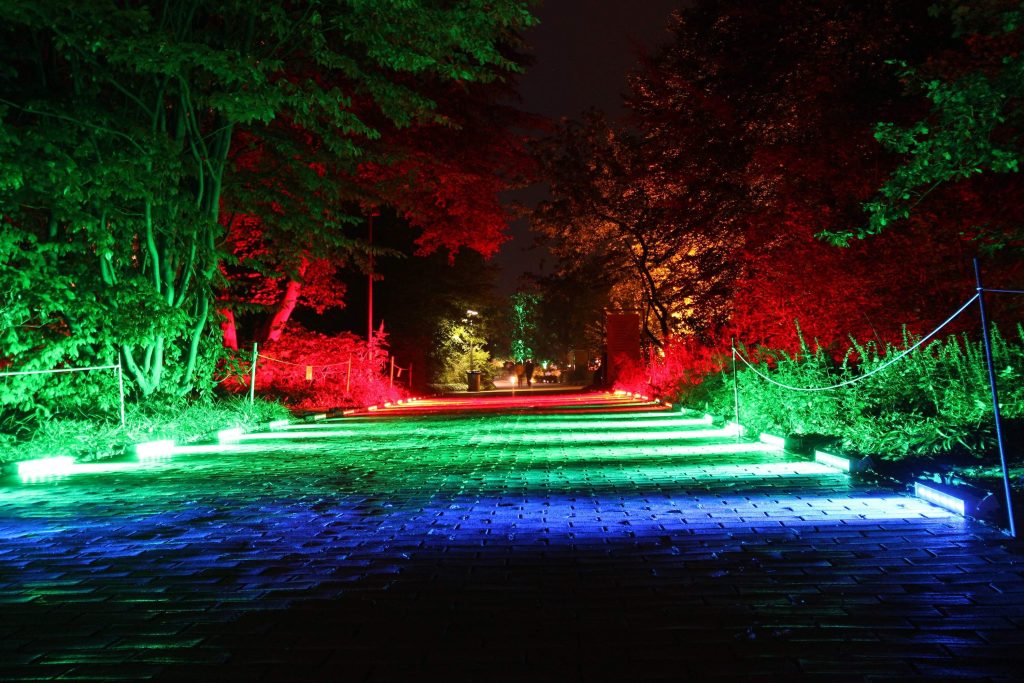
Colored lighting can add a unique and playful element to your landscape. By using colored lenses or RGB fixtures, you can create different moods and atmospheres. For example, warm colors like red and orange evoke a cozy and intimate ambiance, while cool blues and greens produce a calm and tranquil setting.
Installation and Maintenance Tips
To ensure a successful landscape lighting installation, follow these tips:
Hire a professional: While DIY projects are tempting, hiring a professional ensures proper installation, adherence to local electrical codes, and a well-executed design.
Periodic maintenance: Inspect your lighting fixtures regularly to ensure they are in good working condition. Replace any burnt-out bulbs promptly and clean the fixtures to maintain optimal performance.
Adjust as needed: As your landscape evolves, you may need to adjust your lighting plan. Keep an eye on plant growth and changes in your outdoor spaces, and make necessary adjustments to maintain the desired effect.
Best Landscape Artificial Lighting for Plants
Incorporating landscape artificial lighting into your garden enhances its aesthetic appeal and provides an opportunity to optimize plant growth and health. By selecting the right lighting solutions, you can extend the growing season, cultivate a wider variety of plants, and create a stunning outdoor oasis.
Nothing beats natural sunshine when it comes to selecting the ideal light for growing plants. However, in situations when sunshine is scarce, artificial lighting might be a viable option. Full-spectrum LED growth lights are considered the closest match to natural sunlight. They emit a balanced spectrum of light that encompasses all the wavelengths necessary for optimal plant growth, including red, blue, and white light. LED growth lights are energy-efficient, generate low heat, and offer a variety of customization choices.
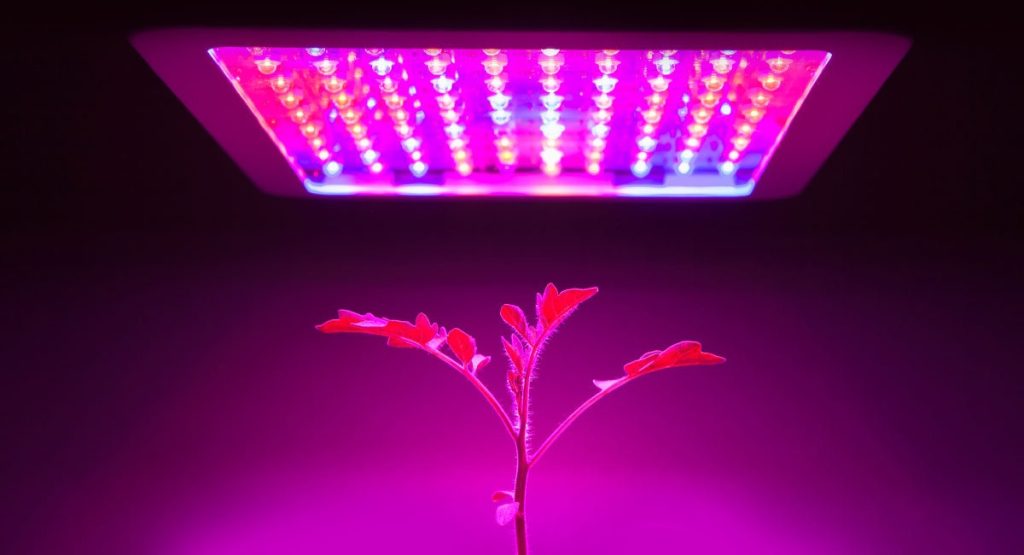
Different plants have different illumination requirements. Some plants flourish in full sun, while others like partial shade or indirect light. Consider the individual demands of the plants in your garden before selecting landscape artificial lighting. Investigate the light intensity, duration, and color spectrum required by each plant species to ensure healthy growth. Customizing the lighting setup to meet these specific objectives can help you obtain the best outcomes. With the appropriate lighting options, your garden will bloom with vivid colors, rich greenery, and a thriving ecosystem that will thrill the eyes and the senses.
Landscape Artificial Lighting in Architecture
Landscape artificial lighting plays a vital role in architectural design, elevating structures from mere buildings to captivating works of art. Skillfully integrating artificial lighting into the landscape surrounding a building, architects can enhance its aesthetic appeal, highlight key features, and create a visually stunning nighttime experience. Strategically illuminating specific elements such as facades, arches, or intricate designs, the play of light and shadows adds depth and texture, highlighting the unique characteristics of the structure. Whether it’s a grand entrance or a striking façade, lighting can emphasize the beauty and craftsmanship of the architecture, turning it into a visual masterpiece.
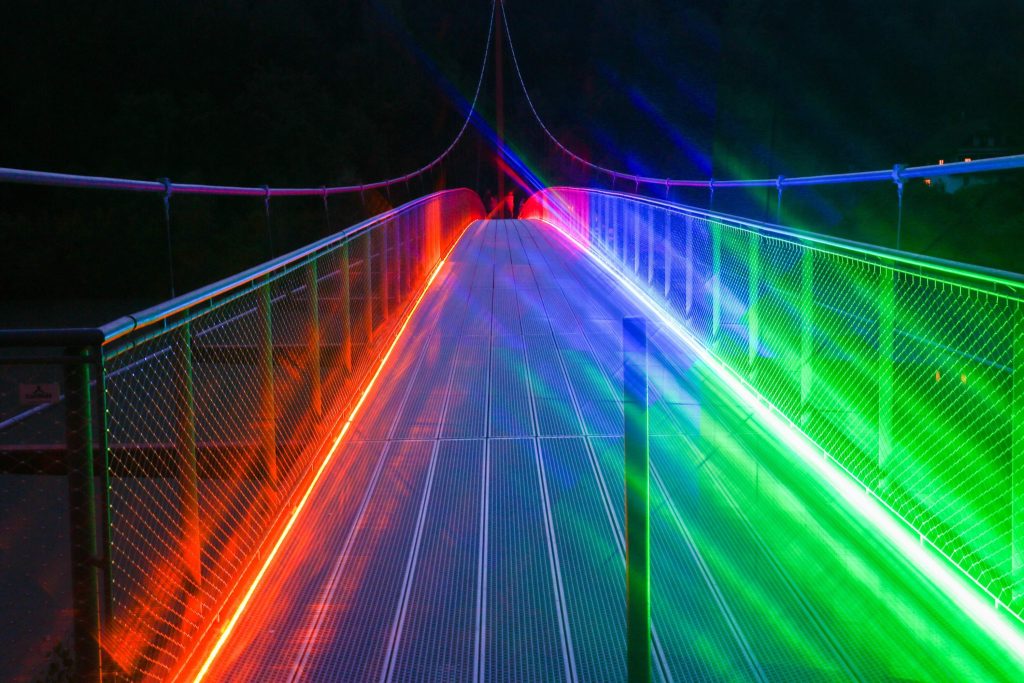
Exterior artificial lighting is a transformative element in architecture, allowing designers to create visually appealing landscapes and improve building perception. Architects may enhance building details, create dramatic silhouettes, generate a sense of identity, and promote wayfinding and safety by strategically incorporating artificial lighting into the landscape. Furthermore, outside lighting transforms spaces into immersive experiences while maintaining a balance of daylight and evening appeal. Artificial landscape lighting genuinely highlights architecture, infusing it with life, beauty, and a mystical charm.
Landscape Artificial Lighting in Greenhouses
Greenhouses are designed to harness the power of natural light, but they are often subject to limitations such as seasonal changes, cloudy days, or geographic location. Landscape artificial lighting serves as a valuable supplement to natural light, providing consistent and controlled illumination throughout the year. By strategically placing growth lights, greenhouse operators can ensure that plants receive the optimal light spectrum and intensity required for their growth and development.

Landscape artificial lighting has transformed greenhouse cultivation, revolutionizing the way plants are grown and extending the possibilities of year-round production. By supplementing natural light, controlling light spectra and intensity, and customizing lighting conditions, growers can optimize plant growth, enhance crop quality, and increase yields. Energy-efficient LED growth lights offer sustainable solutions, while proper light distribution and regular monitoring and maintenance ensure the success of landscape artificial lighting systems.
Designing your Landscape Artificial Lighting Plan

Landscape artificial lighting is an artful technique that involves strategically installing light fixtures in outdoor spaces to enhance their beauty and functionality during nighttime. By thoughtfully illuminating elements such as trees, shrubs, pathways, and architectural features, outdoor artificial lighting adds depth, character, and a touch of magic to any exterior environment.
Understanding Light Zones
Divide your landscape into different light zones to create a layered and coordinated look. Use a combination of techniques and fixtures to achieve the proper balance between ambient, task, accent, and decorative lighting. This approach ensures that no area is over or underlit, creating a visually appealing and functional space.
Highlighting Focal Points
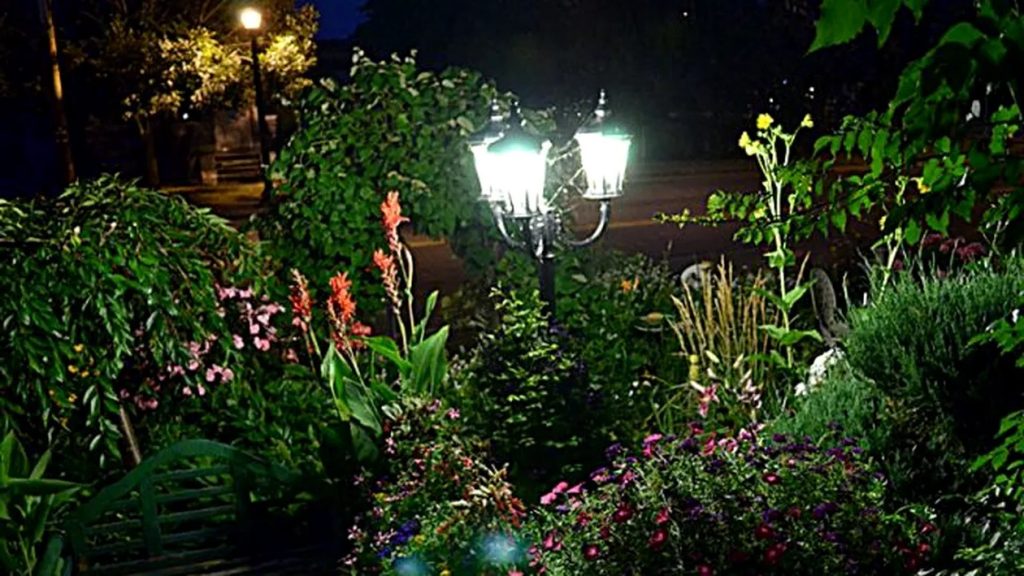
Identify the focal points in your landscape, such as water features, sculptures, or architectural elements, and design your lighting plan to highlight them. Properly placed accent lighting draws attention to these features, adding visual interest and creating a captivating nighttime display.
Creating Depth and Shadows
Experiment with different lighting fixture angles and locations to create depth and shadows in your environment. You can add variety and interest to your outdoor surroundings by carefully adjusting light and shade.
Considering Safety and Security
Incorporate lighting into areas that require enhanced safety and security, such as pathways, entrances, and near outdoor living areas. Well-illuminated spaces not only prevent accidents but also deter potential intruders, making your home a safer place.
Conclusions
In the realm of outdoor design, landscape artificial lighting has emerged as a transformative element that enhances the beauty, functionality, and safety of outdoor spaces. Outdoor artificial lighting extends the usability of exterior spaces into the evening hours, allowing homeowners to make the most of their patios, decks, and gardens. It creates opportunities for delightful evening gatherings with friends and family, cozy dinners under the stars, or quiet relaxation in a pleasantly illuminated outdoor oasis. Landscape artificial lighting enhances the quality of life by providing extended outdoor enjoyment.
With the advancement of energy-efficient lighting technology, landscape artificial lighting has become environmentally friendly and cost-effective. LED lighting solutions use less electricity, last longer, and generate less heat than traditional lighting fixtures. Programmable lighting systems and smart controls allow you to manage and optimize energy use, lowering the environmental impact of outdoor artificial lighting.
Investing in landscape artificial lighting enhances personal enjoyment and adds value to a property. Well-designed and professionally installed lighting systems are features desired by potential home buyers. The enhanced curb appeal, increased safety, and extended functionality offered by landscape lighting positively influence a property’s market value and set it apart in a competitive real estate market.
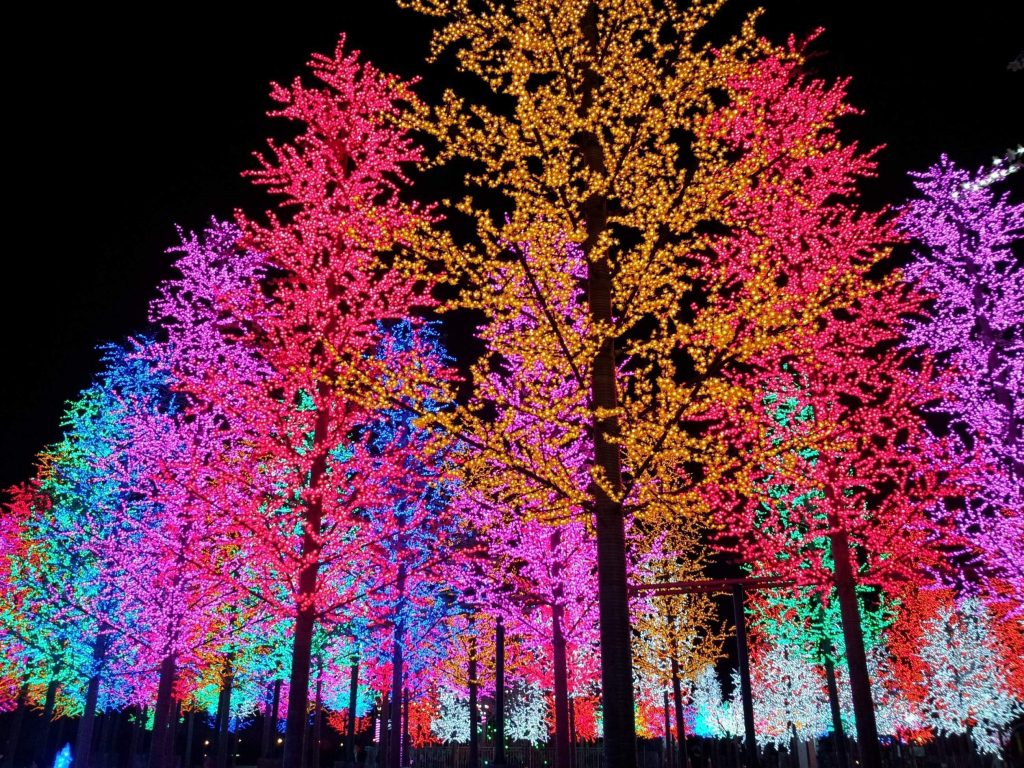
The main benefits of landscape artificial lighting are personalization and adaptability. With so many lighting options available, homeowners may customize their lighting systems to their preferences. Outdoor lighting provides limitless opportunities for creating gentle and subtle illumination while providing spectacular and brilliant displays. Experimenting with various intensities, colors, and angles results in a totally personalized outside lighting experience.
In conclusion, landscape artificial lighting is a vital element in outdoor design that enhances the beauty, functionality, and safety of exterior areas. Its ability to create an inviting ambiance, ensure safety, highlight architectural features, extend outdoor usability, increase property value, and embrace energy efficiency makes it an invaluable asset for homeowners. Harnessing the transformative power of landscape artificial lighting, home owners can elevate their outdoor experiences, create memorable moments, and unlock the full potential of their outside spaces.
FAQs (Frequently Asked Questions) about Landscape Artificial Lighting
Q1.What’s the best artificial light?
The best artificial light depends on the intended use and desired features. LED lights are often considered a top choice due to their exceptional energy efficiency, long lifespan, and versatility. Incandescent bulbs provide a warm glow, fluorescent lights offer efficiency and broad coverage, halogen lights offer high color rendering, and HPS and metal halide lights use in outdoor and large-scale applications. Consider your specific lighting needs and prioritize factors such as energy efficiency, color rendering, and lifespan to determine the best artificial light for your requirements.
Q2.Can I do my own landscape lighting?
You can successfully embark on a DIY landscape lighting project with adequate planning, research, and attention to safety rules. Assess your abilities, plan your design, understand electrical needs, select high-quality fixtures and lights, investigate low-voltage solutions, and use suitable installation techniques. Landscape lighting can transform your outside space into an aesthetically appealing and functional paradise, whether you choose to do it yourself or hire a professional.
Q3.Do landscape lights use a lot of electricity?
The amount of electricity consumed by landscape artificial lights varies depending on the type of light used, the wattage and lumens generated, the number of fixtures installed, the time of use, and the presence of energy-saving technologies. LED lights are popular due to their high energy efficiency, while low-voltage systems and solar-powered lights also help to save energy. You may reduce electricity consumption while enjoying the beauty and utility of your landscape lighting by carefully selecting energy-efficient lighting solutions, optimizing consumption using timers or motion sensors, and considering alternate energy sources.
Q4.What is the best locations for landscape lighting?
The best locations for landscape lighting depends on your specific goals and the features you want to highlight. You can create a visually attractive and functional outdoor space by strategically placing lights to accentuate key features, illuminate pathways, enhance safety and security, highlight trees and plants, showcase architectural elements, and emphasize water features. Balancing light distribution and considering the surrounding environment will ensure an inviting and balanced lighting design. Experiment with different techniques and remember to regularly review and adjust your lighting to maintain the desired effect as your landscape evolves.
Q5.Which type of landscape lighting is easiest to install?
Solar-powered lights, low-voltage lighting systems, plug-and-play options, stake lights, and battery-powered lights seem to be easier to install for landscape lighting projects. These user-friendly options allow homeowners to add beautiful and functional lighting to their outdoor spaces without extensive electrical knowledge or professional assistance. Select the type of landscape lighting that best suits your needs and enjoy the convenience and simplicity of DIY installation.
Q6.What kind of artificial light is best for plants?
LED growth lights, fluorescent growth lights, HID lights, CFLs, and induction lights are frequently used for artificial plant lighting. Each type has its advantages and is suitable for different plant growth stages and requirements. Understanding the specific needs of your plants and selecting the appropriate artificial light source will help ensure healthy and thriving plant growth.
Q7.What color of artificial light is best for plants?
The best color of artificial light for plants depends on the growth stage and desired outcomes. Red light is essential for flowering and fruiting, blue light is crucial for vegetative growth, and full-spectrum light provides a balanced range of wavelengths for overall plant health. Consider the specific needs of your plants and choose lighting options that allow flexibility in adjusting color ratios. LED grow lights provide versatility and customization to meet the unique requirements of different plant species, contributing to healthy and effective plant growth.
Q8.What is the most natural method of lighting used in landscaping?
Harnessing natural sunlight is the most authentic and eco-friendly method for achieving a natural lighting effect in landscaping. It offers abundance, visual appeal, health benefits, and energy efficiency. While natural sunlight is preferred, incorporating artificial lighting as supplementary sources can help maintain consistent illumination. By embracing the power of natural sunlight, you can create a breathtaking and sustainable landscape that blends with nature and enhances the outdoor experience.
Q9.Is professional landscape lighting worth it?
Many homeowners find that professional landscape lighting is a good investment because of the multiple benefits it provides. Professional services add ability, knowledge, and quality that may change your outdoor space, from expert design and greater curb appeal to improved safety and security. Professional landscape lighting is also a significant long-term investment due to the potential for energy savings and continuous maintenance assistance. When determining whether professional landscape lighting is worth it for your property, consider your individual demands, budget, and intended objectives.
Q10.Should I leave my landscape lights on all night?
Whether you should leave your landscape lights on all night depends on your specific goals, energy efficiency concerns, and personal preferences. To optimize energy consumption, consider using timers, motion sensors, or programmable lighting systems to control when the lights are active. Find a balance between aesthetics, security, environmental impact, and personal comfort to create a lighting strategy that aligns with your needs. By making thoughtful decisions, you can enjoy the benefits of landscape lighting while minimizing energy consumption and environmental impact.
Q11.Does landscape lighting attract bugs?
While some types of lighting can attract bugs, there are several strategies to minimize this issue in landscape lighting. Choosing light sources with warm white or amber hues, reducing the intensity and brightness of the lights, and strategically positioning the lights can help deter insects. Additionally, using motion-activated lights and incorporating bug-repellent techniques can provide further protection. By implementing these measures, you can enjoy the beauty and functionality of landscape lighting while keeping bug attraction under control.
Q12.Should outdoor lights be taken down in winter?
The decision to take down outdoor lights during winter is subjective and depends on individual circumstances. Assess the weather resistance of your lights, prioritize safety considerations, evaluate energy efficiency concerns, and consider the aesthetic appeal and purpose of the lights. With these things in mind, you can make an informed decision that meets your needs and interests.
